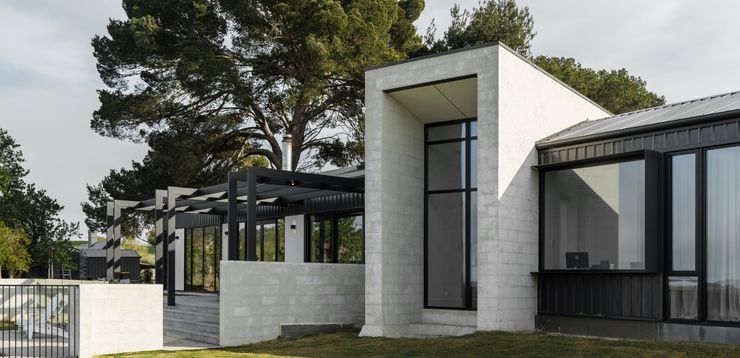Sustainable sophistication: real metal & wood finishes redefining environmental responsibility
Written by
13 March 2024
•
4 min read
A profound shift is reshaping the interior design industry's ethos, with sustainability now at the forefront of priorities. We sat down with That Metal Company’s Ali Bambridge to hear how real metal and wood finishes are revolutionising design practices and championing environmental stewardship.
The environmental toll of traditional finishing materials
The stark environmental impact of traditional finishing materials, notably PVC, has not gone unnoticed. Once a staple in the construction world, PVC, or Poly Vinyl Chloride Plastic, has emerged as one of the most toxic substances saturating our planet.
The unregulated practices in metal foundry production and timber sourcing have also left indelible marks on the environment. This growing awareness is now reshaping industry practices, compelling a shift towards responsible sourcing and manufacturing.
“Years of unconstrained and irresponsible practices has created a deeper interest and need to know and understand where materials are coming from and how they are created throughout their entire process,” says Ali.
In the pursuit of authenticity and quality, modern designers are turning to sustainable materials to construct greener, more conscientious buildings.
“Real metals in both liquid and sheet form conform to VOC emissions, are non-PVC and created from recycled materials,” shares Ali.
Similarly, Real Timber Veneers are not just Forest Stewardship Council (FSC) certified but also bear the mark of approval from the Programme for the Endorsement of Forest Certification (PEFC) by a third-party independent body.
Businesses with an environmentally conscious bent are leading the charge in implementing sustainable practices and Ali says That Metal Company is serious about aligning itself with responsible companies. Take, for instance, Chemetal, which not only manufactures real metal finishes but has also installed a solar energy system, generating up to 33% of its annual electricity. Similarly, Metalier has introduced a Water-Based VOC-free coating system, underscoring a commitment to protecting the Earth. These initiatives go beyond mere product innovation, reflecting a holistic commitment to reducing the industry's ecological footprint.
However, for designers the challenge lies in striking a harmonious balance between creating sophisticated, yet cost-effective, high-end designs with real metal and wood finishes while adhering to sustainable principles, shares Ali.
“As a company dedicated to sourcing and providing designers with quality sustainable materials we understand the challenge of reaching a balance between responsible, sustainable, quality and cost-effective.
“One of many great developments coming out of collective responsibility for sustainable materials is the ability for companies that are and have been for many years producing with sustainable and responsible practices to showcase their products through independent bodies dedicated to allowing transparency and full disclosure to the design community.”
Consumer power: shaping the future of sustainable design
Consumer awareness is a formidable force steering the industry towards sustainability. Companies, like Chemetal (supplied by That Metal Company), which began its journey two decades ago with a commitment to green practices, have witnessed a growing demand for responsible, sustainable, and cost-effective products.
“Our main obstacle in the beginning was competition with less expensive PVC-based products and alternatives, however, over the years we have noticed an increased demand for responsible, sustainable and cost-effective.”
Consumers today are not only concerned with the final product but are increasingly conscious of the entire lifecycle – from production to disposal. As the industry embraces circular design principles, real metal and wood finishing companies play a crucial role. Certifications such as PEFC ensure responsible harvesting practices, fostering a circular approach that allows for new growth and protection of forests. Libraries such as mindfulMATERIALS provide a standardised means for accurate reporting of building products and their associated health information.
An innovative future for metal & wood finishes
As sustainability takes centre stage in design decisions, the industry is compelled to innovate while maintaining a commitment to environmental responsibility. Consumers, now more aware of their carbon footprint, are demanding transparency and responsibility from manufacturers and suppliers.
“Many of our metal products are made entirely of aluminium, with some of our aluminium finishes containing up to 85% recycled content. Our supplier Chemetal, also sells any scrap metal material to be repurposed,” shares Ali. “Genuine wood veneer is sourced directly from the tree therefore it has the ability to continue the lifecycle back into the earth.”
While new technology and practices require investment and long-term commitment, a community of like-minded companies is essential for sustainable changes to become standard industry practices. The ongoing integration of sophisticated design with environmental responsibility signals a promising future for sustainable practices in the design world.
Explore real wood and metal finishes from That Metal Company














